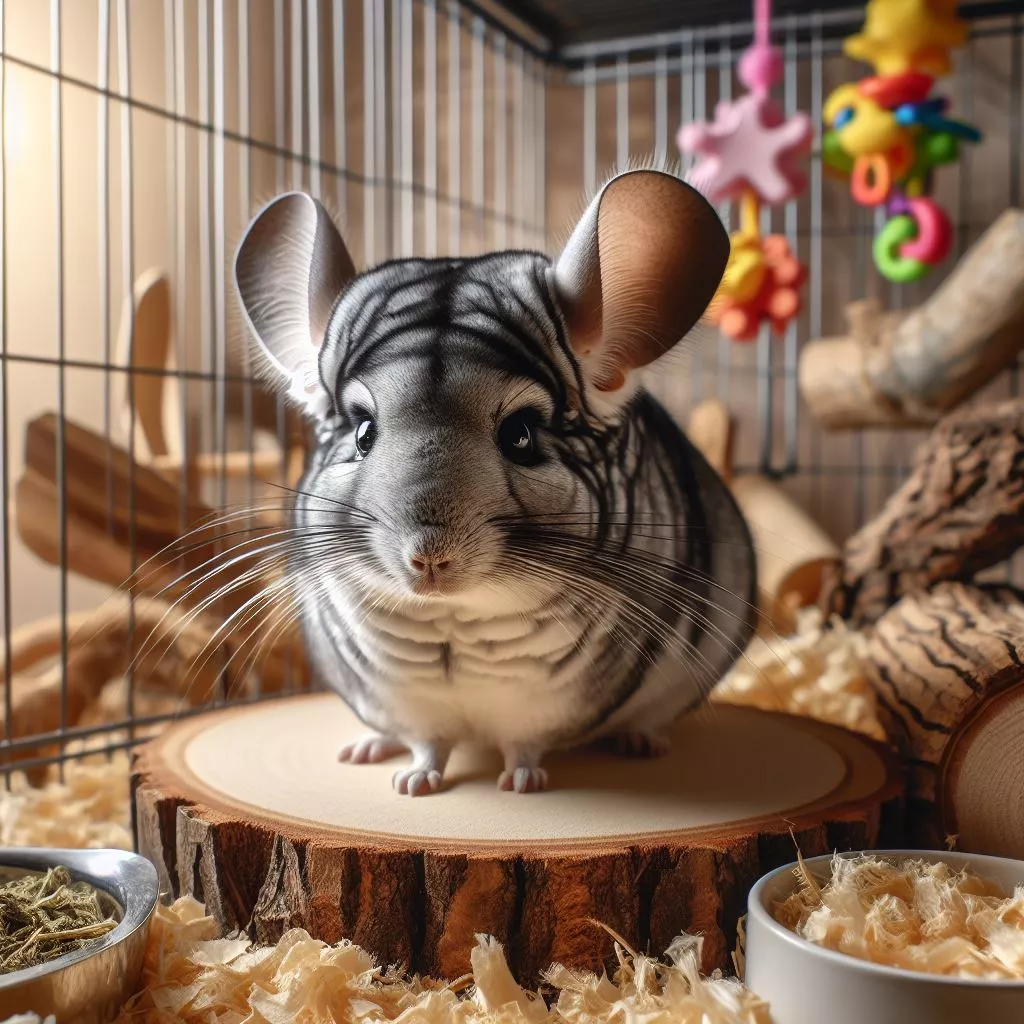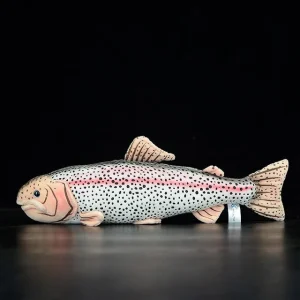Have you ever encountered the fluffy, energetic chinchilla? With huge dark eyes, oversized furry ears, and a fuzzy tail, these charming rodents make amusing pets for the right owners. Chinchillas originate from the towering Andes Mountains in South America, living in rocky and arid environments. Their incredibly dense coats and nocturnal habits aid survival in the cool mountain terrain. While chinchillas seem cuddly, they are naturally skittish as prey animals. However, their playful personalities and strange behaviors endear them to human caretakers. Read on to uncover surprising chinchilla facts about these delightful creatures!
🐹 All About Chinchilla Breeds and Appearance 🐹

Chinchillas belong to the rodent family, with two main breeds – short-tailed and long-tailed:
✅ Short-tailed chinchillas have shorter, thicker bodies and tails. They reach 8-15 inches long including the tail. Originating from Chile, short-tails are critically endangered.
✅ The long-tailed chinchilla has a slimmer build and tail up to 6 inches long. At 15-20 inches in total length, they are slightly bigger than short-tails. This variety comes from Bolivia, Argentina, and Peru.
Both types have:
- Super soft, velvety fur reaching up to 2 inches long! Each follicle produces up to 60 hairs compared to 1-3 on humans. This creates a dense coat to retain heat.
- Rounded ears almost as large as their head and whiskers pointing out on all sides. The ears help dissipate excess body heat.
- Large black eyes adapted for night vision.
- Strong hind legs allowing them to jump 6 feet high!
- Distinctive flat teeth that continuously grow for gnawing vegetation.
While long-tails are not considered endangered, habitat loss threatens the survival of all chinchilla species. Support conservation efforts for these charming creatures!
💤 Nocturnal Habits and Behaviors 💤

As prey animals originally adapted to evade predators in barren mountain areas, chinchillas display some intriguing behaviors and habits:
✅ Nocturnal activity patterns mean they sleep during the day and become lively at dusk.
✅ When scared, chinchillas can shed patches of fur so they can escape while the predator chews the tuft of fur. The fur then regrows.
✅ As a defense, they may also spray urine or emit a musky odor.
✅ Chinchillas bark when alarmed and chatter their teeth when annoyed.
✅ To show happiness, chinchillas often jump straight up in the air – an entertaining behavior known as “popcorning”!
✅ Highly social animals, chinchillas like to live in herds in the wild.
✅ They are also incredibly agile, able to leap up to 6 feet and squeeze into tiny spots.
Understanding natural chinchilla behavior helps provide proper care when kept as pets.
🥕 Chinchilla Diet and Housing Needs 🥕

Chinchillas have particular dietary and housing requirements:
Diet
✅ High-quality timothy hay should make up the majority of food intake.
✅ Commercial chinchilla pellets provide a balanced diet.
✅ Small amounts of vegetables, fruits or herbs offer additional nutrition.
✅ Avoid sugary or wet foods which can cause digestive issues.
Housing
✅ Multi-level wire cages allow for jumping and climbing.
✅ Ledges, ramps, tunnels, and hideaways enrich the environment.
✅ Chinchilla dust baths are essential for fur hygiene.
✅ Ideal temperature range is 60-72° F – avoid direct heat or drafts.
With proper care, chinchillas can live over 20 years! Be sure to research specific needs for long, healthy lives.
🛀 Chinchilla Hygiene and Grooming 🛀

That luscious chinchilla fur requires special grooming attention:
Dust Baths
- Chinchillas clean their fur through dust bathing 2-3 times per week.
- Dust absorbs skin oils and supports skin health underneath the dense fur.
- Use specifically formulated chinchilla dust instead of sand.
Fur Slip
- Periodically, chinchillas shed large tufts of fur down to the undercoat.
- Fur slip allows new hairs to grow in, maintaining the fresh fur coat.
Teeth
- Chinchilla teeth grow continuously throughout their life span.
- Provide chew sticks to help wear down ever-growing teeth.
Nails
- Trim nails monthly to prevent accidental scratches.
Regular grooming and access to dust baths keeps chinchillas looking fluffy and feeling healthy.
😲 Surprising and Fun Chinchilla Facts 😲

Beyond the basics, chinchillas harbor some surprises…
Reproduction
✅ Female chinchillas are induced ovulators – meaning mating causes ovulation instead of regular cycles.
✅ Males can develop hair rings around the penis during mating season if not bred – requiring removal by a vet.
History
✅ Chinchillas were first domesticated by the Inca people of the Andes for fur.
✅ By the 1900s chinchillas neared extinction due to hunting for the fur trade.
✅ Today, domestic chinchillas stem from 11 animals brought to the U.S. for ranching in 1923.
Sounds
✅ Chinchillas make various sounds like barks, screams, and purrs.
✅ They even emit a high-pitched alarm call when scared or to warn others nearby.
Personality
✅ Despite seeming shy, chinchillas bond closely with owners and love attention.
✅ Minimal handling as babies makes them more skittish.
✅ Well-socialized chinchillas happily play for hours and sleep near owners.
Finding the Right Chinchilla Breeder
When searching for a chinchilla breeder, be sure to ask lots of questions! 🤔 Reputable breeders focus on animal health and good temperament.
✅ Inquire about lineage – a dedicated breeder tracks ancestry to prevent inbreeding.
✅ Request to see parent chinchillas to evaluate health and personalities.
✅ A quality breeder socializes babies through gentle handling.
✅ Avoid pet stores selling chinchillas – these often come from mills with questionable practices.
📝 Create a checklist of key questions and visit breeder facilities in person before bringing home your new chinchilla friend!
Introducing Chinchillas to Other Pets
While chinchillas prefer living with other chinchillas, they can sometimes co-exist with other pets.
🔼 Supervision is critical when allowing chinchillas to interact with dogs or cats.
🔼 Never house rabbits and chinchillas together due to differing nutritional needs.
🔼 Monitor all multi-pet households for signs of stress or aggression.
🔼 Provide separate housing areas for chinchillas to retreat from other pets.
With proper precautions, chinchillas can thrive in pet-filled homes! 🐕🐈🐇🐭
🏁 In Summary… 🏁
For an introduction to chinchillas, we covered key facts about these charming rodents:
- Two breeds with incredibly soft, dense fur
- Nocturnal activity patterns
- Unique behaviors like fur slipping and spraying urine
- Extensive habitat and dietary needs
- Grooming requirements
- Surprises like hair rings, historical endangerment, and vocalizations
While demanding exotic pets requiring lots of research, chinchillas reward owners with amusing antics and affection. Support wildlife conservation to protect endangered chinchillas!
Frequently Asked Questions
Q: How often should I interact with my chinchilla?
A: Plan to actively play with your chinchilla for 30-60 minutes per day in short sessions. Chinchillas are most active at dusk but adjust to owners’ schedules.
Q: Can I take my chinchilla outside?
A: Never take a chinchilla outdoors! They overheat quickly and have no survival instincts, making outdoor time extremely hazardous.
Q: What temperature is best for chinchillas?
A: Ideal temperatures range from 60-72° F. Avoid direct heat sources or drafts near the chinchilla habitat.
Q: How long do chinchillas live?
A: With excellent care, chinchillas frequently reach 15-20 years old. Some even make it past 25 years old.





